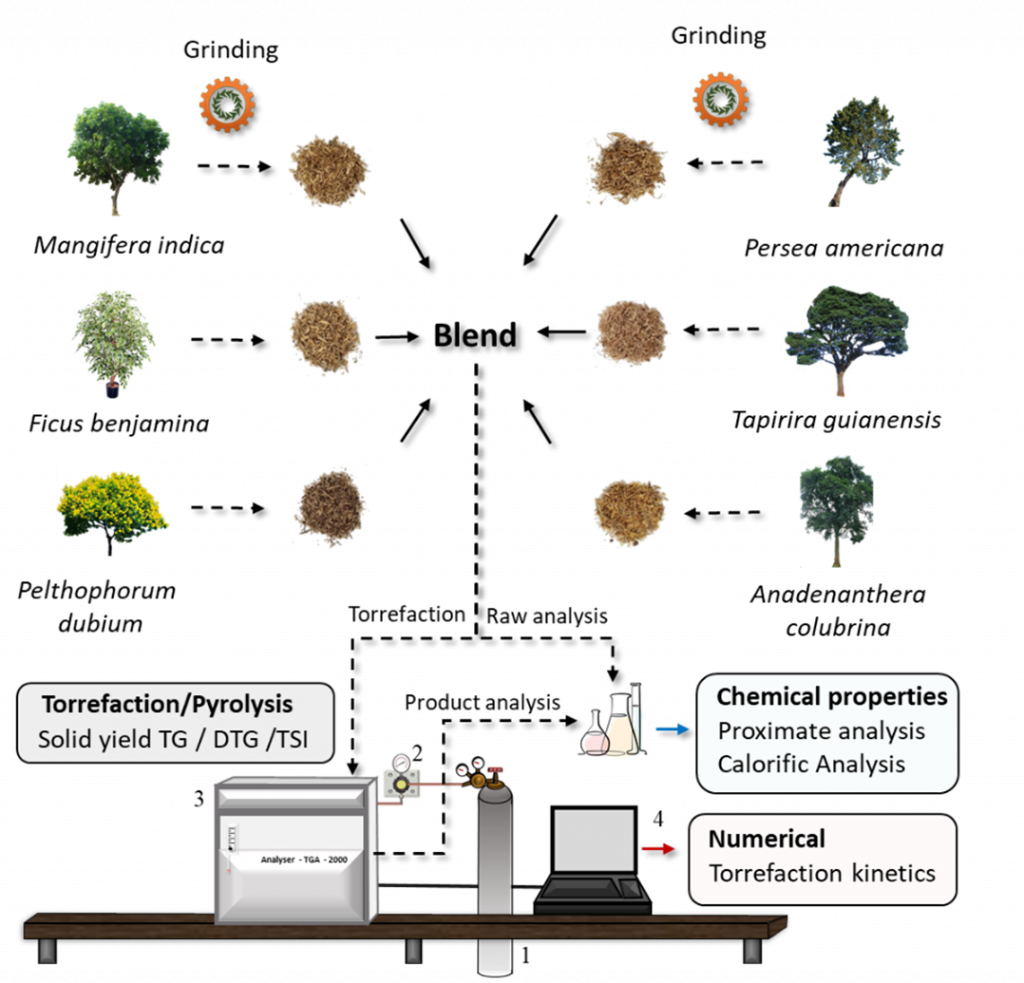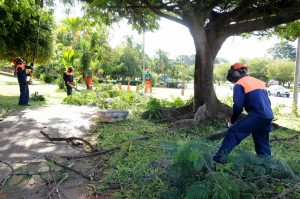Urban woody residues contribute to overloaded landfills, directly associated with environmental issues. As a technical proposal for energy use and environmental remediation, this work aims to thermally upgrade the residues and characterize its solid biofuel. Firstly, a representative blend (Mangifera indica, Ficus benjamina, Pelthophorum dubium, Persea americana, Anadenanthera colubrina and Tapirira guianensis) of Brasilia city forest ecosystem was taken. Secondly, the blend was submitted to torrefaction at 225, 250 and 275 °C temperatures for 60 min under inert (N2) conditions. The torrefaction product was characterized by proximate, ultimate and calorific analyses. Moreover, to establish prediction correlations for the obtained properties, the solid yield and two severity indexes of torrefaction (torrefaction severity index (TSI) and torrefaction severity factor (TSF)) were evaluated. Finally, the reaction kinetics was conducted with a two-step reaction model, determining a model to predict mass loss degradation. Results reported a raw blend with an excellent description of the six species selected. The torrefied blends presented promising properties as biofuel (30.20% fixed carbon, 21.47 MJ kg−1 higher heating value and 1.33 and 0.56 H/C and O/C atomic ratios) and provided insights for soil amendment application (26.6% enriched N content). The torrefaction indexes demonstrated high accuracy (average R2 of 0.9845) for all correlations, where TSI was the optimum index for correlating torrefaction severity and biochar properties. Lastly, the degradation prediction reported high accuracy (R2 > 0.9806). Results provided insights into using unavoidable and carbon–neutral residues, encouraging the concept of biorefinery and urban symbiosis, leveraging the transition to a circular economy in urban areas.





